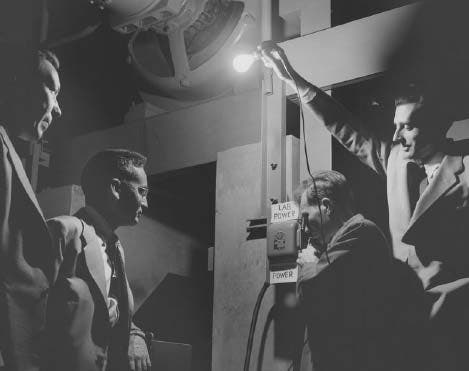Early Discoveries
1895-1905
In rapid succession, scientists make a series of significant discoveries that transform physics into a new discipline.
December 1895
Wilhelm Röntgen, a physics professor at the University of Würzburg, published his discovery of x-rays in the Sitzungsberichte der Wurzburger Physikalisch-Medicinischen Gesellschaft, the Meeting Reports of the Wurzburg Physical-Medical Society. Röntgen named the rays “X” to indicate the unknown nature of the radiation. In 1901 Röntgen received the first Nobel Prize in physics for his discovery.
April 1897
British physicist Joseph J. Thomson, the Cavendish Professor of Experimental Physics at the University of Cambridge, announced his discovery of the electron in the Royal Institution and a conclusion subsequently in the Philosophical Magazine. He discovered the electron while researching cathode rays. He named the new particles “corpuscles.”
July 1898
French scientists Marie Skłodowska and Pierre Curie published their discovery of radium in Comptes Rendus de l'Académie des Sciences. In the December issue of the same journal, the Curies announced their discovery of polonium, named after Marie’s homeland of Poland. The Curies shared the 1903 Nobel Prize in physics with Antoine Henri Becquerel.
September 1902
Ernest Rutherford and Frederick Soddy published their theory of radioactive decay in the Philosophical Magazine. They discovered that radioactive material decayed according to an exponential law and created the concept of half-life. Rutherford and Soddy also proved that atoms of one radioactive element would spontaneously turn into another, by expelling a piece of the atom at high velocity.
June 1905
Twenty-six year old German scientist Albert Einstein, working at the patent office in Bern, Switzerland, published his special theory of relativity that implies convertibility of matter and energy in Annalen der Physik. In the same year, Einstein published papers on a new method of counting and determining the size of the atoms, and on the phenomenon of Brownian motion that proved that atoms actually exist. Historians have named Einstein’s prolific scientific output of 1905 as his annus mirabilis, his miracle year.

